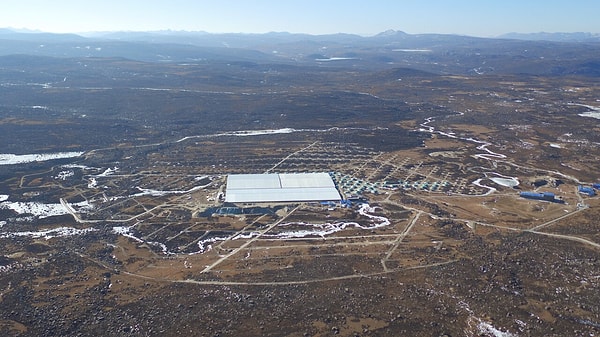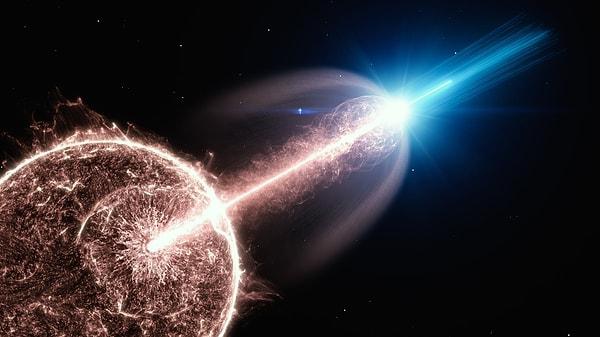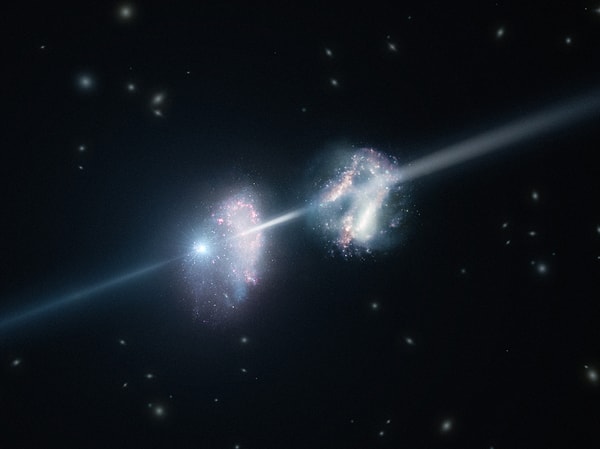The ‘Brightest-Ever’ Gamma Ray Burst May Possibly Hint To Dark Matter

The brightest gamma ray burst was captured and it had scientists all over the world jumping out their seats since it was deemed as a “once in a blue moon” thing. Though, it seems that the gamma ray explosion could possibly hint towards the study of dark matter.
The gamma ray explosion is named as GRB 221009A, also known as Swift J1913.1+1946, had first been discovered on October 9, and yet astronomers are still giddy nearly a month later. Scientists also named the burst as the “B.O.A.T” which stands for the Brightest Of All Time.
According to NASA, the gamma-ray explosion started in the position of the Sagitta constellation and may indicate the emergence of a new black hole created when a giant star crashed down beneath its own mass.
The gamma ray burst was dubbed the brightest of all time since it was at close proximity to our planet, which is only 2 billion light years away.
Large High Altitude Air Shower Observatory (LHAASO)

This is probably the most significant finding in China. The Large High Altitude Air Shower Observatory (LHAASO) in the Sichuan province records high-energy particles from space. Just a few hundred high-energy photons have already been observed from all these particles in the historical past of gamma-ray burst astronomy.
This peculiar space event brought in thousands of people to LHAASO. 'The gamma-ray burst basically went off in the sky directly above them,' astrophysicist Sylvia Zhu of the German Electron Synchrotron (DESY) in Hamburg explained.
Those observed seems to have been a presumed high-energy photon at 18 teraelectron volts, which is four folds greater than just about anything shown before from a gamma-ray burst and also more energized than that of the Large Hadron Collider's greatest energies. Such a high-energy photon ought to have been assimilated by connections with the universe's light reflection on its way to our planet.

Following the explosion, a high-energy photon could have been converted into an axion-like particle. Axions are light particles which are assumed to explain the mysteries of dark matter; axion-like particles are considered to be significantly heavier. Strong magnetic fields, such as those found around a collapsing star, might convert high-energy photons into these particles. The axion-like particle would be able to move freely across the enormous expanse of space. When it reaches our galaxy, magnetic fields will transform it back into a photon that will then travel to Earth.
Others question whether LHAASO's detection was a mistaken identity case. Maybe the high-energy photon happened to come from another source and its perfectly timed entry was merely an accident. 'I'm very skeptical,' astrophysicist Milena Crnogorevi of the University of Maryland said. 'I'm currently leaning toward it being a background event,' Racusin, deputy project scientist on the Fermi telescope, said. Also, a Russian observatory disclosed a blow by another higher-energy 251 TeV photon coming from the burst, but 'the jury's still out.'

Other astronomers wish to use the 'BOAT' to figure out why only certain stars generate gamma ray explosions as they explode. 'That is one of the big mysteries,' said Yvette Cendes, a Harvard-Smithsonian Center for Astrophysics astronomer. 'It has to be a massive star.' Only once in a blue moon will our galaxy have a gamma ray burst event. So many questions have been raised about the elusive gamma ray burst phenomena, but in the future, many will forget about it quickly since it only occurs rarely.
Keşfet ile ziyaret ettiğin tüm kategorileri tek akışta gör!


Send Comment